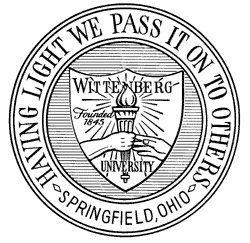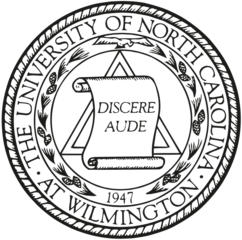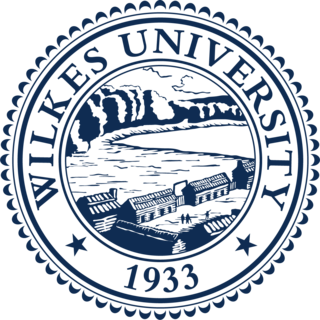| Name | Description | Image(s) | Ref. |
|---|
| 28 West | 28 West houses the offices for Community Safety and Residence Life. Community Safety Officers (CSOs) patrol the campus, provide community services and respond to emergencies. [2] The Residence Life office maintains the on-campus living experience and oversees community-focused programming; the staff includes professional Resident Directors and student House Advisors. [3] |  | [4] |
| A. A. Knowlton Laboratory of Physics | In 1967, the biology building was upgraded and expanded, creating the A. A. Knowlton Laboratory of Physics in recognition of longtime physics professor Ansel Alphonso Knowlton. Advanced technologies available to students include a cosmic ray muon detector, helium refrigeration system, nitrogen laser, photocapacitance system, spectrometers and sputum culture, plus laboratories for astrophysics and scientific computation. |  | [5] |
| Anna Mann | Bequested by Anna Mann, this building originally served as housing for female students. The building was remodeled and expanded in 1993. Now coed, Anna Mann's first floor offers a sitting room and sun porch; many of the rooms include fireplaces, hardwood floors and window seats. |  | [6] |
| Arthur F. Scott Laboratory of Chemistry | Named after former chemistry professor and Reed College president Arthur F. Scott, the Laboratory of Chemistry was built in 1992 with offices and research laboratories for faculty and students. Advanced technologies available to students include a diffractometer, polarimeter, spectrometers, plus laser and computational laboratories, the latter of which features Silicon Graphics stations. |  | [7] |
| Aspen House | | 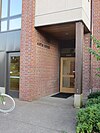 | |
| Aubrey R. Watzek Sports Center | The original gym, built in 1913, was demolished in 1965 for the construction of the Sports Center. The center was named after Aubrey R. Watzek, a board member who served from 1931 to 1942 and also offered financial resources for construction of the biology building. Renovated in 2002, the center features a dance studio, two gyms, an indoor pool, a martial arts room, racquetball and squash courts, saunas and a weight room. |  | [8] |
| Bidwell House | |  | |
| Birchwood Apartments | The Birchwood Apartments are fully furnished, with kitchens, living rooms, and the option of one or two bedrooms. |  | [9] |
| Bragdon Hall | Part of the Cross Canyon Residence Halls, along with Chittick, Griffin, McKinley and Woodbridge Halls, Bragdon was built in 1998 and named after a former Reed College president. Bragdon is the newest of the Cross Canyon dormitories and houses 65 students. The building includes indoor bike storage, kitchens, lounges, a laundry room and a storage room. |  | [1] |
| Canyon House | | 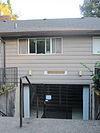 | |
| Center for Advanced Computation | The Center for Advanced Computation is located on the eastern side of the campus and provides a space for students, faculty and visitors to conduct research and offer seminars in the field of computation. [10] The center hosts the Artificial Life Lab, a research group dedicated to the study of biological, cultural and economic systems. [11] |  | |
| Chinese House | |  | |
| Chittick Hall | Part of the Cross Canyon Residence Halls, along with Bragdon, Griffin, McKinley and Woodbridge Halls, Chittick is named after an early faculty member and serves to house 28 students, mostly during their first year. Chittick includes a kitchen, laundry room, and a three-level social room with a fireplace, plus a third-floor balcony with views of Reed Canyon. The hall is coed by alternate rooms and offers singles, divided and undivided doubles, and divided triples. |  | [1] |
| Dorothy Johansen House | The Dorothy Johansen House is the former residence of Reed College graduate, history professor and archivist Dorothy Johansen. The building now houses the academic support services. |  | [12] |
| Educational Technology Center | The 23,000-square foot Educational Technology Center was completed in 2002. The building houses teaching and technology resources for faculty, staff and students, including classrooms, three 24-hour information resource centers, and multimedia facilities. The center also provides hardware and software resources, including a computer repair shop. Reed's computing services staff and faculty offices for the classics and religion departments also reside within the building. | 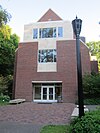 | [13] |
| Eliot Hall | |  | [14] |
| Eric V. Hauser Memorial Library | |  | [15] |
| Farm House | |  | [16] |
| Foster | The Foster and Scholz buildings, built during 1954–1955, were once a single residence hall for male students called Foster-Scholz. Foster, named after former Reed College president William T. Foster, currently serves as a coed dormitory with divided double rooms. |  | [17] |
| French House | The French, German, Russian and Spanish Houses, known collectively as the Woodstock Language Houses, were designed by A. E. Doyle and built in 1922. Once used for faculty residence, French-speaking students (aided by live-in scholars and native speakers) now reside in the French House. Residents primarily converse in French and sponsor community events. |  | [18] |
| Garden House | The Garden House is a residence hall that houses ten students and often has a "dorm theme". [19] Acquired in 1991 and renovated in 1994, the House is accessible by a short walk away from the center of campus via Reed Canyon. |  | [19] |
| German House | The French, German, Russian and Spanish Houses, known collectively as the Woodstock Language Houses, were designed by A. E. Doyle and built in 1922. Once used for faculty residence, German-speaking students (aided by live-in scholars and native speakers) now reside in the German House. Residents primarily converse in German and sponsor community events. Just southwest of the German House is a Black Oak that has been designated as a heritage tree. | 
 | [18] |
| Griffin Hall | Part of the Cross Canyon Residence Halls, along with Bragdon, Chittick, McKinley and Woodbridge Halls, Griffin is named after an early faculty member and serves to house 28 students, mostly during their first year. Griffin includes a kitchen, laundry room, and a three-level social room with a fireplace, plus a third-floor balcony with views of Reed Canyon. The hall is coed by alternate rooms and offers singles, divided and undivided doubles, and divided triples. |  | [1] |
| Gray Campus Center | |  | [20] |
| Greywood | Originally built for a community center in Vancouver, Washington, Greywood was moved to Reed College in 1946. Greywood received its name following a naming competition. Historically, the building has housed classrooms, the community safety office, computing and information services, the development office, faculty offices, and even an art gallery and lounge. Greywood currently houses the alumni and parent relations program, College Relations Information Systems (CRIS), and career services. Adjacent to the building are Giant Sequoias and Pacific Madronas. | 
 | [21] |
| Health and Counseling Center | Built in 1938 as the Glenn Chesney Quiett Infirmary, primarily with contributions made in honor of Quiett, an alumnus who served in World War I. The building was renovated in 1960, doubling its size. Today the Health and Counseling Center offers health and counseling services to students. |  | [22] |
| Kaul Auditorium | | | |
| L.E. Griffin Memorial Biology Building | The L.E. Griffin Memorial Biology Building is named after Lawrence Edmonds Griffin, who served as biology professor and head of the department from 1920 to 1945. |  | [23] |
| MacNaughton | MacNaughton was built during 1954–1955 and originally served as a residence hall for female students. Named after former Reed College president Ernest B. MacNaughton, the building is now a coed dormitory with divided double rooms. |  | [17] |
| McKinley Hall | Part of the Cross Canyon Residence Halls, along with Bragdon, Chittick, Griffin and Woodbridge Halls, McKinley is named after an early faculty member and serves to house 28 students, mostly during their first year. McKinley includes a kitchen, laundry room, and a three-level social room with a fireplace, plus a third-floor balcony with views of Reed Canyon. The hall is coed by alternate rooms and offers singles, divided and undivided doubles, and divided triples. |  | [1] |
| Naito Hall | Naito Hall and Sullivan Hall, built in 1997, house 160 residents and offer common areas, kitchens and views of the Tualatin Mountains. Naito Hall is named for Bill Naito, a Portland businessman who graduated from Reed and later served on its board of trustees. |  | [24]
[25] |
| Old Dorm Block | Constructed in 1912 and renovated in 1992, the Old Dorm Block was inspired by old English manor houses and features grotesques on its exterior. The building's eight residence halls were once identified by the letters "A" through "H", but were renamed in 1935 as Abington, Doyle, Eastport, Kerr, Ladd, Quincy, Westport and Winch. The building also features a sun dial, sally port, and statues of beavers in honor of Oregon, and formerly held the Doyle owl statue. |  | [26] |
| Parker House | Reed College purchased the Parker House in 2005. The Arts and Crafts-style home was designed by Morris H. Whitehouse in 1929 for Mary Evans Parker. Much of the home's gardens, designed by Florence Holmes Gerke and which once extended to the Eastmoreland Golf Course, still exist. |  | [27] |
| Performing Arts Building | This building was constructed in 2013 for a cost of $28 million USD. The structure servers dance, theatre, and music. |  | [28] [29] [30] |
| Physical Plant | |  | [31] |
| Prexy | |  | [32] |
| Psychology Building | |  | [33] |
| Reed College Apartments | Acquired in 1986, the Reed College Apartments are available for students following their first year. Apartments are fully furnished, with kitchens, living rooms, and the option of one or two bedrooms. |  | [9] |
| Russian House | The French, German, Russian and Spanish Houses, known collectively as the Woodstock Language Houses, were designed by A. E. Doyle and built in 1922. Once used for faculty residence, Russian-speaking students (aided by live-in scholars and native speakers) now reside in the Russian House. Residents primarily converse in Russian and sponsor community events. |  | [18] |
| Scholz | The Scholz and Foster buildings, built during 1954–1955, were once a single residence hall for male students called Foster-Scholz. Scholz, named after former Reed College president Richard F. Scholz, currently serves as a coed dormitory with divided double rooms. |  | [17] |
| Sequoia House | |  | |
| Sitka House | |  | |
| Spanish House | The French, German, Russian and Spanish Houses, known collectively as the Woodstock Language Houses, were designed by A. E. Doyle and built in 1922. Once used for faculty residence, Spanish-speaking students (aided by live-in scholars and native speakers) now reside in the Spanish House. Residents primarily converse in Spanish and sponsor community events. |  | [18] |
| Student Center | |  | |
| Student Union | |  | |
| Studio Art Building | |  | [34] |
| Sullivan Hall | Sullivan Hall and Naito Hall, built in 1997, house 160 residents and offer common areas, kitchens and views of the Tualatin Mountains. |  | [24] |
| Theatre | |  | [35] |
| Theatre Annex / Reed Warehouse | Acquired in 1989 and remodeled in 1996, the Theatre Annex Building includes main stage and black box theaters, plus two additional rooms for instruction and rehearsals. The remainder of the building, sometimes called Reed Warehouse, [36] is used for set construction, design and storage. |  | [37] |
| Vollum College Center | |  | [38] |
| Woodbridge Hall | Part of the Cross Canyon Residence Halls, along with Bragdon, Chittick, Griffin and McKinley Halls, Woodbridge is named after an early faculty member and serves to house 28 students, mostly during their first year. Woodbridge includes a kitchen, laundry room, and a three-level social room with a fireplace, plus a third-floor balcony with views of Reed Canyon. The hall is coed by alternate rooms and offers singles, divided and undivided doubles, and divided triples. |  | [1] |
|






















































